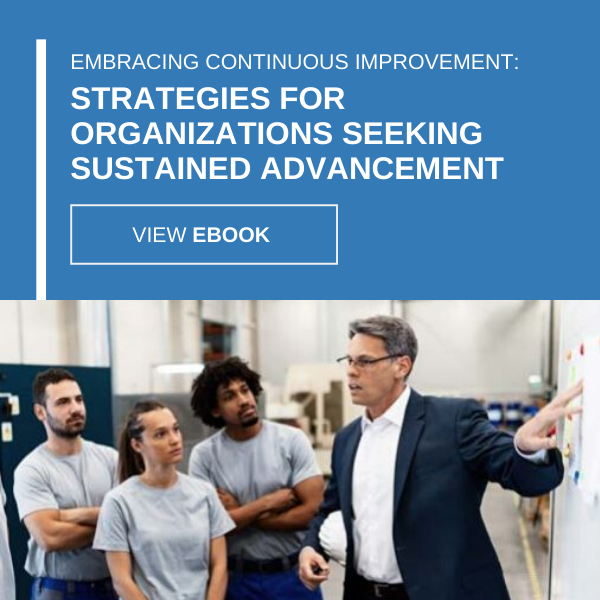
How to Increase Employee Engagement and Training to Improve Retention
If the Great Resignation has hit your company, leaving you short-staffed and scrambling to fill open positions, you’re not alone. An average of 4 million people per month have resigned from their jobs since April 2021, according to the Department of Labor Statistics, and the trend is showing no signs of slowing down. In November 2021, the number reached an all-time high: 6.3 million. It is unprecedented. Economists are calling it a disaster. It is creating headaches from the corner office to the shop floor and everywhere in between.
Why are people leaving their jobs in record numbers? You can point to the pandemic as the major cause. To put it mildly, it has been a challenging time for everyone, and many people have decided life is too short to stay in a job that isn’t fulfilling.
For businesses, it means a necessary shift in focus. Employee engagement and retention needs to take its place at the top of the priority list for HR, managers and shift supervisors. Employee engagement is job one. Why is it so important? Gallup reports that just 36% of U.S. employees are engaged at work, and 74% are actively looking for new jobs.
It’s not enough anymore to issue a paycheck. The work has to be fulfilling and meaningful and engaging in order to retain your best people. One powerful way to address that growing problem is by increasing employee training, learning and development.
“According to LinkedIn, 94% of employees say they’d stay at a company longer if it invested in their career development.”
Engagement through training
The statistics bear out the connection between training and development and employee engagement in study after study. Udemy: 80% of employees said learning and development opportunities would help them feel more engaged. LinkedIn: 94% of employees say they’d stay at a company longer if it invested in their career development. The list goes on.
It stands to reason. Companies that are invested in their employees get invested and engaged employees in return. It really is as simple as that.
The benefits of giving your employees training, learning and development opportunities radiate throughout the company.
- Happier, engaged employees aren’t looking for greener pastures.
- Well-trained people make your whole operation more efficient and effective.
- Engaged workers really care about the job they’re doing, and aren’t phoning it in.
- When employees feel valued, they give 100%.
- Giving an employee a career path within your company helps ensure they see a long-term future.
- When problems arise, engaged employees are motivated to help solve them.
- Engaged employees are not cogs in a machine. They are invested partners in profitability.
At USC, we’ve seen it work in practice, playing out on the shop floor. Many clients are dealing with issues resulting from the Great Resignation — lost productivity, dwindling throughput and low engagement on the part of employees. The fix for that is by focusing on your employees and keeping them on the job.
We recently helped one client get a dramatic uptick in employee engagement and retention as a result of increased training. But it didn’t start as a training project. It began as a productivity project that led to increased training. Oftentimes, many facets intertwine to create a snarl of challenges in the workplace, and this was no exception.
We’ve highlighted it all in our recent case study, “Construction Materials Supplier Builds Up their Equipment and Employee Engagement Programs“, but in a nutshell: The client was dealing with dwindling efficiency due to challenges on many different fronts, including maintenance and equipment breakdowns, hiring and retention difficulties, and operations and communication breakdowns.
As we dealt with maintenance and other machine issues, we came upon some old manuals that detailed how best to operate and maintain equipment on the shop floor. Nobody was using the dusty, old volumes anymore, but we thought they held important gems of knowledge that, perhaps, had been lost. That’s a common byproduct of veteran workers leaving or retiring — they take that hard-earned institutional knowledge with them when they walk out the door for the final time, leaving younger workers without skilled mentors who really had a firm handle on how the job should get done.
We took those manuals and updated them. The next step was formalizing a training process to add a new level of skill to the workforce.
Certifications were the key
We decided to take the extra step of issuing certifications to all of the employees who successfully underwent the training process. We found this one, small step was a crucial piece of the puzzle. Employees who worked hard and passed the training were given a tangible symbol of their achievement. Like a diploma, a marriage certificate, or a driver’s license, they were just pieces of paper. But the meaning infused into that paper certificate was all about pride, advancement, achievement and mastery.
We saw employees waving their certificates to others on the shop floor, boasting about what they had achieved. For trainers, it doesn’t get any better than that.
And the company saw a change in productivity as well, with highly trained people working the line on the shop floor. All of that training led to the machines functioning better, which in turn lessened the frustrating situation that led to them coming to USC in the first place — low productivity and dwindling throughput. With engaged employees, that problem was solved.






